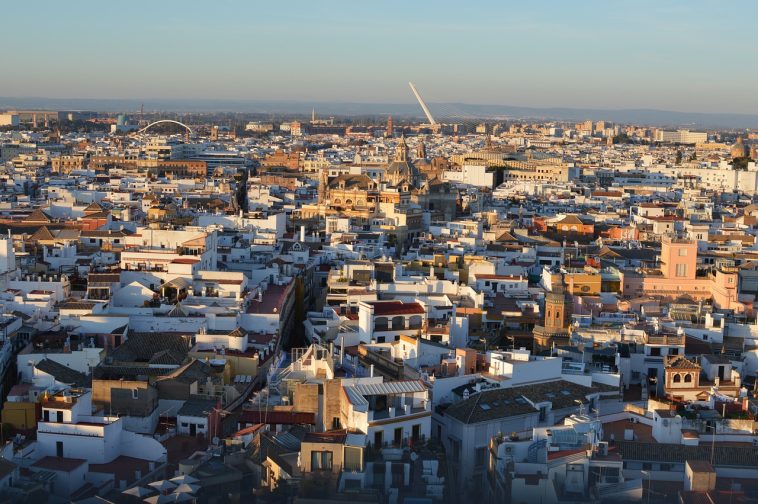Seville, the heart of Andalusia, is a city of flamenco, Moorish architecture, and sun-drenched plazas. But when is the best time to visit Sevilla? Whether you’re chasing perfect weather, iconic festivals, or budget-friendly travel, this guide covers you.
Why Timing Your Visit to Seville Matters
Seville’s Mediterranean climate means hot summers and mild winters. To make the most of your trip, plan around spring (March–May) or fall (September–October) for ideal weather and fewer crowds. Avoid the scorching heat of summer unless you’re prepared for temperatures above 40°C (104°F).
🌸 Spring in Seville (March–May): Perfect Weather & Iconic Festivals
Spring is Seville’s peak season—and for good reason:
- Pleasant Weather: Temperatures range from 15°C–25°C (59°F–77°F), perfect for exploring landmarks like the Real Alcázar and Seville Cathedral.
- Iconic Festivals:
- Semana Santa (Holy Week): Experience solemn processions and ornate floats during Easter (March/April).
- Feria de Abril: Dance Sevillanas, sip rebujito, and marvel at flamenco dresses and horse parades (April).
- Blooming Beauty: Stroll through fragrant orange blossoms in Maria Luisa Park and the Alcázar Gardens.
Pro Tip: Book flights and hotels 3–6 months early—spring is Seville’s busiest season!
🍂 Fall in Seville (September–October): Warm Days & Fewer Crowds
After summer’s heat, autumn offers a quieter, golden-hued charm:
- Comfortable Climate: Temperatures range from 20°C–30°C (68°F–86°F), ideal for rooftop sunsets and tapas crawls.
- Local Culture: Enjoy Fiesta de la Hispanidad (October 12) or day trips to nearby white villages like Carmona.
- Shorter Lines: Explore landmarks like Plaza de España and Seville Cathedral without the summer crowds.
Pro Tip: September can still be hot—plan outdoor activities for mornings or evenings.
☀️ Summer in Seville (June–August): Surviving the Heatwave
Temperatures often soar above 40°C (104°F), but budget travelers can still enjoy:
- Early Mornings/Late Nights: Visit the Alcázar at opening time or stroll the Guadalquivir River after sunset.
- Indoor Activities: Cool off in air-conditioned museums like Museo de Bellas Artes or catch a flamenco show.
- Summer Festivals: Experience Velá de Santiago y Santa Ana (July) with riverside concerts and fireworks.
Pro Tip: Hydrate constantly and embrace the siesta culture!
❄️ Winter in Seville (November–February): Mild & Budget-Friendly
Winter offers mild weather and fewer tourists:
- Cool Comfort: Daytime temps average 12°C–18°C (54°F–64°F)—ideal for exploring.
- Festive Vibes: Christmas markets, nativity scenes (*belenes*), and light displays light up December.
- Affordable Stays: Score deals on hotels and flights outside peak seasons.
Note: January is the rainiest month, but showers are brief.
Best Time for Budget Travelers
November–February (excluding Christmas week) is the cheapest time to visit Seville, with lower prices on flights and accommodations.
Travel Tips for Seville:
- Book Early: Secure popular hotels and guided tours months ahead for spring festivals.
- Combine Trips: Pair Seville with Granada (Alhambra) or Córdoba (Mezquita) for a richer Andalusia itinerary.
- Local Insights: Follow Seville tourism boards on social media for real-time event updates.
FAQs About Visiting Seville
- Q: When is the hottest month in Seville?
A: July and August, with temperatures often exceeding 40°C (104°F). - Q: Is Seville crowded in April?
- A: Yes! April’s Feria de Abril draws global crowds—book accommodations early.
- Q: Can I visit Seville in winter?
- A: Absolutely! Winter offers mild weather and festive charm, perfect for budget travelers.
Final Thoughts
Whether you chase spring’s festivals, autumn’s golden light, or winter’s cozy streets, Seville captivates year-round. Use this guide to pick the best time to visit Seville for your dream Spanish getaway—and don’t forget your sunscreen!

